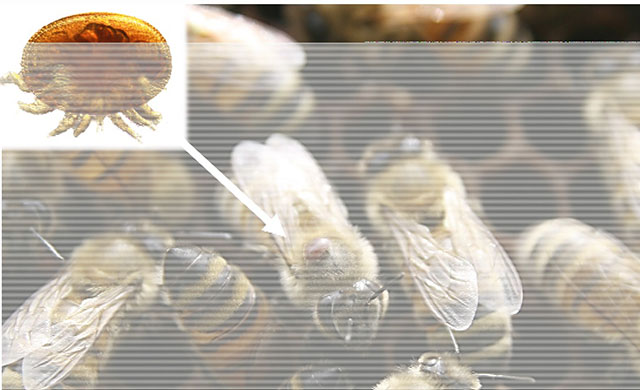At the origin of a global invasion: the honey bee parasite Varroa that keeps on jumping
Speakers
Event series
Content navigation
Description

Varroa mites are ectoparasites infesting honeybee colonies and originally found only in Asia. One century ago, the Western honeybee Apis mellifera was introduced into the native range of the Asian honeybee A. cerana for beekeeping. This new, sudden contact between the two species gave the opportunity for parasite spill over. One ectoparasite mite, Varroa destructor, successfully “jumped” at least twice from the Asian honey bee, its original host, to the "naive" Western honeybee. In less than a century, the invasive Korean V. destructor spread nearly worldwide (except in Australia) and became the major destructive force behind honey bee decline. In 2008, V. jacobsoni has emerged as a new threat by also jumping twice in Papua New Guinea. In light of these reports, additional host switch events could occur but the genetic mechanisms behind the quick adaptation and success of Varroa are poorly understood. More broadly, the repeated host switches provide an opportunity to examine to what extent parallel evolutionary event occur using similar vs. different mechanisms. In this talk, I will demonstrate how the new reference genomes we developed in our lab combined to comparative and population genomics can help shed light on i) the co-evolution patterns between the two mites and their original host, ii) potential genetic basis for host switch and iii) evolution of Varroa populations following jumps and global invasion.
Biography
I am French, but I was born and raised in La Reunion Island, a French overseas department located about 700 km to the East of Madagascar. I completed my Ph.D. at the University of La Reunion on the genetic diversity and phylogeography of the honey bees in the Indian Ocean hotspot of biodiversity. I combined classical population genetics and demographic inferences approach to better understand from where insular populations may have originated, and which factors shaped their evolution since. Now for my first postdoc in Sasha Mikheyev's team at OIST, I am focusing on the host-parasite honey bee-Varroa model with the opportunity to dig into large genomic data to understand what factors drove successful independent host switches and subsequent global spread.
Location
Eucalyptus Seminar Room, Rm S205, Level 2, RN Robertson Building (46)

